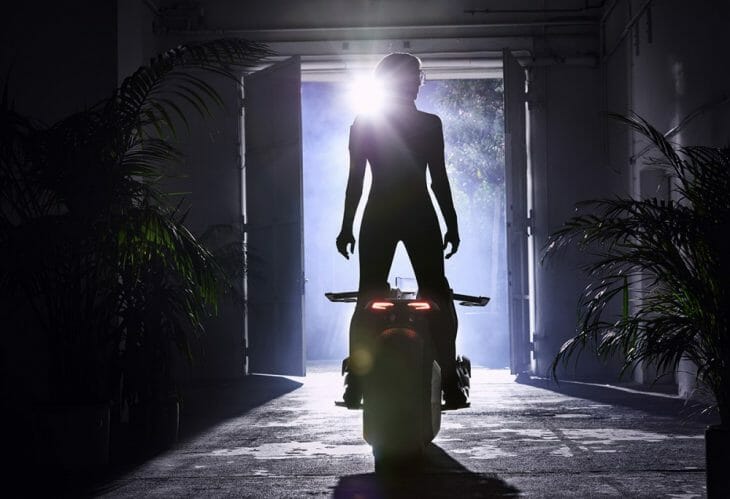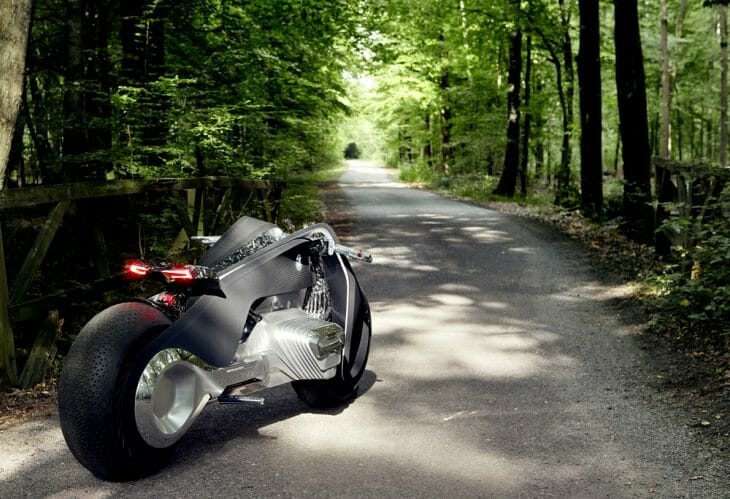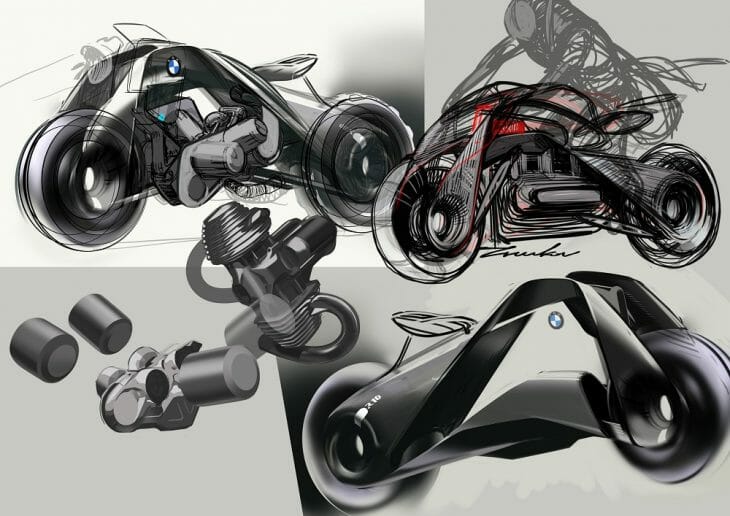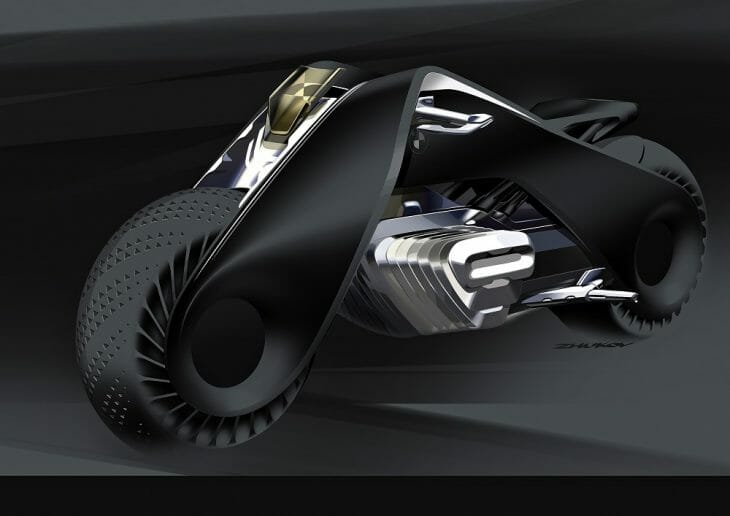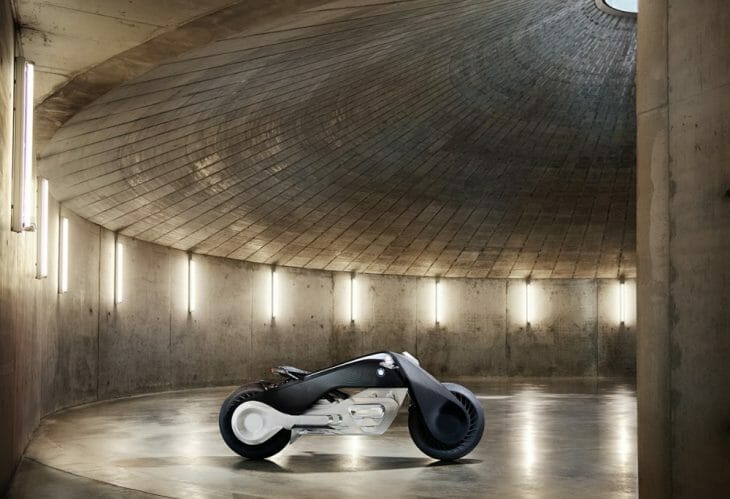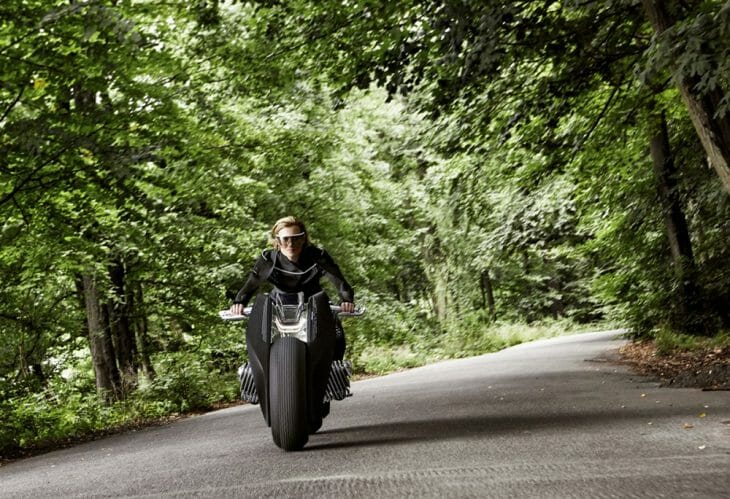Rennie Scaysbrook | October 12, 2016
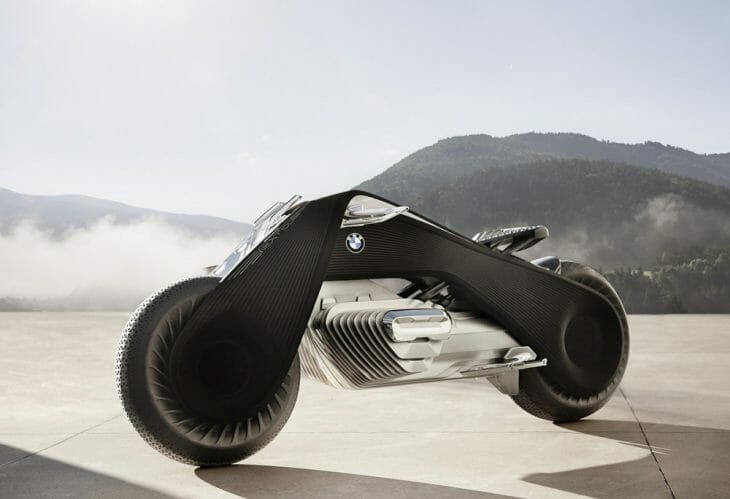 Enter the machine: This is the future of riding, according to BMW.
Enter the machine: This is the future of riding, according to BMW.
The next 100 years of biking, as the German giant sees it
BMW Motorrad has taken the wraps of its vision for the future of motorcycling in the Vision Next 100, and it’s about as futuristic looking as you’d expect.
“The BMW Motorrad VISION NEXT 100 embodies the BMW Group’s vision of biking in a connected world – an analogue experience in a digital age. Motorcycling is about escaping from the everyday: the moment you straddle your bike, you are absolutely free. Your bike is The Great Escape,” says Edgar Heinrich, Head of Design at BMW Motorrad, outlining the core principles underlying his brand’s Vision Vehicle.
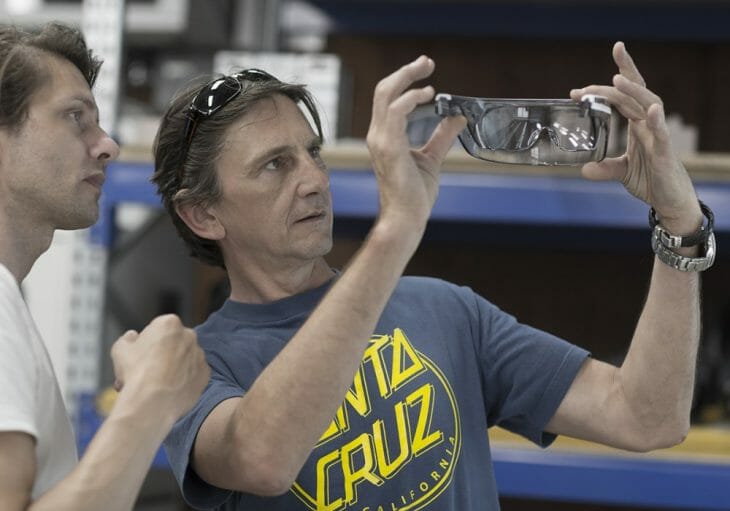 Edgar Heinrich, Head of Design at BMW Motorrad, inspects the glasses that will save your life.
Edgar Heinrich, Head of Design at BMW Motorrad, inspects the glasses that will save your life.
The machine links both past and future – the engine will be a zero emissions unit in the shape of the company’s trademark boxer flat twin design, but there’s more to it than that.
“The engine’s outward appearance changes depending on the circumstances: when the bike is resting, the power unit is compact, extending outwards only when the bike sets off, to enhance aerodynamics and protect the rider from the elements. Its polished aluminum finish confirms the superior quality of this component,” says the BMW press release.
The frame has echos of BMW’s first bike – the R32 – of 1923. But the VISION NEXT 100 is more about looking forward than back: the frame is a flex frame, that BMW says, “Being flexible, it allows the bike to be steered without the various joints found on today’s motorcycles. Turning the handlebar adjusts the entire frame, changing the direction of the bike. The amount of strength needed to steer depends on the situation: at standstill, the Flexframe allows a light steering whereas at higher speeds it remains very rigid.”
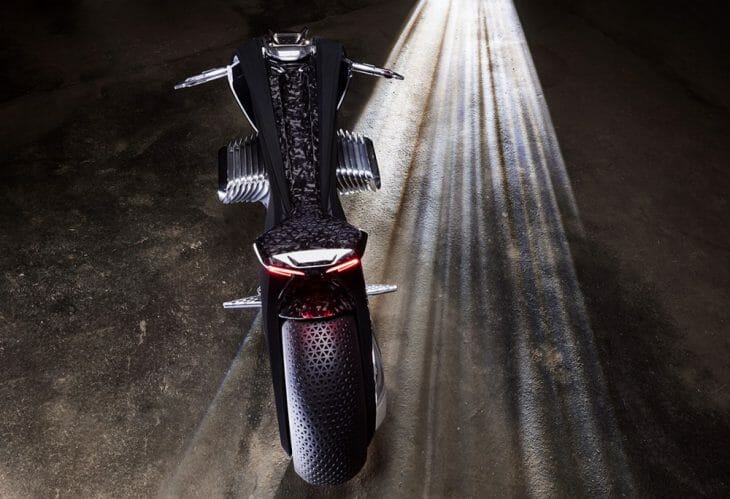 The frame is a single piece that flexes via your inputs to make it steer.
The frame is a single piece that flexes via your inputs to make it steer.
The arrangement of the nakedbike-style bodywork is made such so it protects the rider as well if not better than a full fairing machine. And there’s no suspension.
“Damping is provided by the tires, whose variable tread actively adjusts to suit ground conditions and ensure the best possible grip in any situation,” says BMW.
The bike will also have a self-balancing system built into it, meaning it will never tip over and sidestands will be a thing of the past.
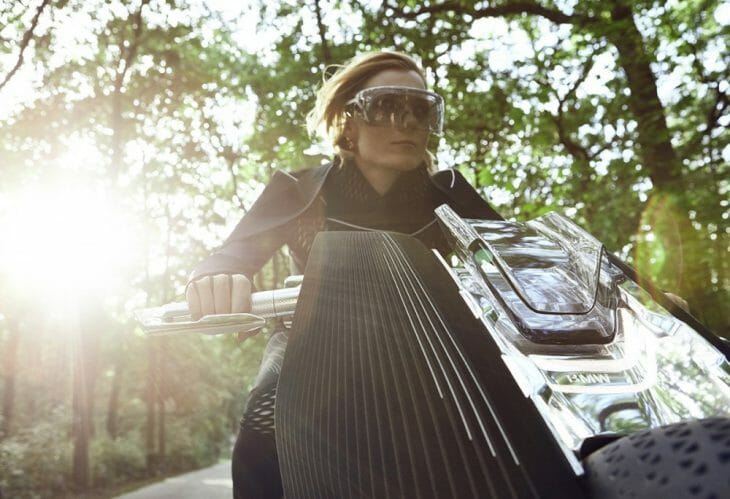 No helmet – would you trust the system with your life?
No helmet – would you trust the system with your life?
But what of the rider? This bike is about digital connectivity working in tandem with an analogue riding experience, and BMW believes the rider of the future will be unshackled by riding gear and the need to wear a helmet.
“A key point with the BMW Motorrad VISION NEXT 100 was to make sure the constant digital presence doesn’t undermine the analogue riding experience. The display and operating concept works so subtly that the rider can enjoy an entirely natural biking experience, trusting the bike completely and enjoying complete freedom and ease. As interface designers, our job is to deliver the right amount of the right information at the best possible time and place,” explains Holger Hampf, Head of User Experience at the BMW Group.
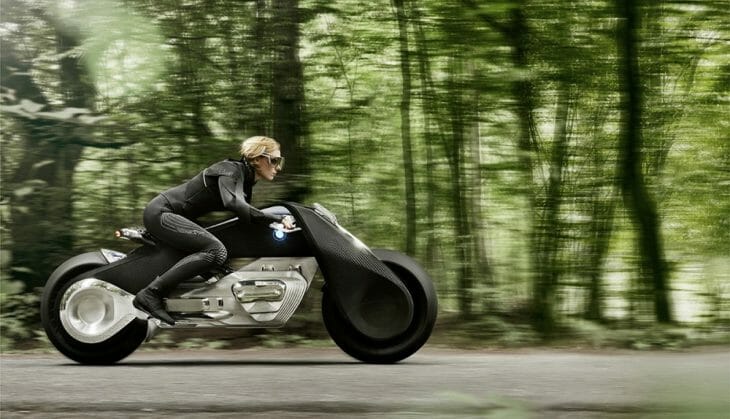
Information will be fed to the rider via the visor.
“This essentially consists of a pair of data glasses that extends across the wearer’s entire field of vision,” says BMW. “As well as providing wind protection, it shows relevant data in one of four designated display areas. These are controlled by the rider’s eye movements: looking up or down changes the content that appears, and looking straight ahead switches the information off completely, leaving the rider to focus even more fully on the biking experience. Information is only projected onto the visor on request, or to alert the rider to the fact that action is needed.”
“The bike has the full range of connected data from its surroundings and a set of intelligent systems working in the background, so it knows exactly what lies ahead. By collating the data it has gathered, it can suggest ideal lines and banking angles, or warn riders of hazards ahead,” Hampf continues. When suggesting lines and angles, the Digital Companion appears in the lower third of the field of view, represented by an upturned triangle from which two horizontal lines extend outwards. Like the display in an aeroplane cockpit, this symbol indicates the current banking angle and ideal lines. If the bike’s current position does not match what is suggested, the rider can correct it as necessary. If he or she responds too late or not at all, the bike will correct itself. The Digital Companion’s advice not only helps novices to learn more about what they and their bikes can do. It also supports experienced riders by allowing them to challenge themselves and continuously improve their skills.
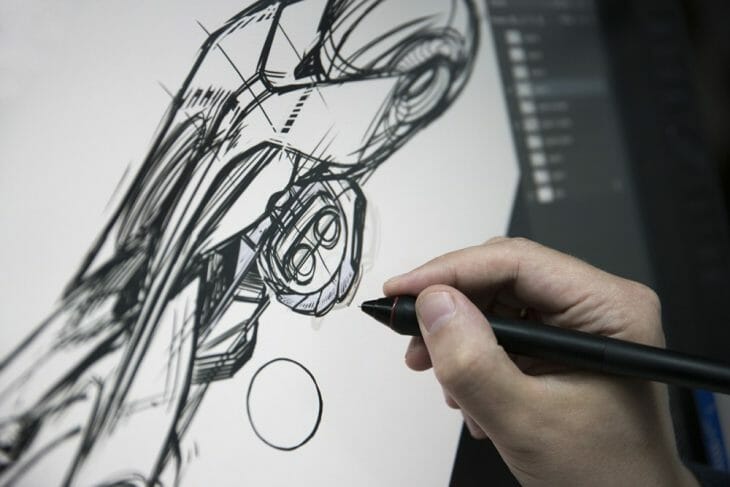
Looking upwards activates the rear-view function in the visor, allowing the rider to see what is going on the road behind. Lowering the eyes to normal levels opens a menu from which the rider can select an option by pointing a finger. Looking further down opens the map view showing the rider’s chosen route.
The rider’s gear adapts to the conditions – hot, dry, wet, cold – the suit will look after you. But unlike today’s riding gear, this suit offers no protection for the rider because, “The bike’s intelligent assistance systems make them superfluous. Instead, sensors in the suit keep track of the wearer’s pulse rate and body temperature and provide the right level of heat or cold. The suit also delivers navigation instructions via the vibrating elements in the arms and legs, and alerts the rider when the banking angle is becoming critical. Rider and machine form a single functional unit to offer a more intense riding experience than ever before.”
